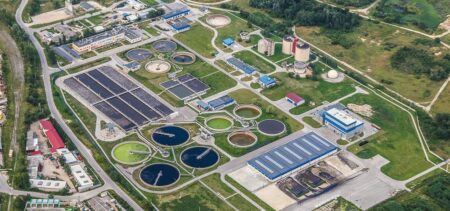Transparency and accountability remain as pivotal elements in the foundation of a thriving democratic society. A transparent government promotes accountability, bolsters public trust, and plays a critical role in the battle against corruption. However, achieving a satisfactory level of governmental transparency and accountability has been a relentless challenge. According to the Global Corruption Barometer, 1 in 4 people paid a bribe to a public official in the past year, highlighting a significant gap in governmental integrity and responsibility.
In this article, we will explore various dimensions of government transparency and accountability, delving deeply into their current state and the challenges obstructing their realization. Additionally, we will scrutinize how technology and strategic policymaking can be leveraged as powerful tools to enhance openness in governmental operations, cultivate a culture of integrity, and construct a resilient framework that fosters an accountable and transparent government. We will also evaluate future perspectives, continuously evolving challenges, and the promise held by innovative strategies and technologies in the realm of governmental transparency and accountability.
The Current State of Government Transparency and Accountability
Government transparency and accountability are dynamic concepts that have evolved with societal changes and technological advancements. Today, governments are under increasing pressure from citizens and advocacy groups to operate transparently and be held accountable for their actions and decisions. The goal is to ensure that public resources are utilized effectively, public services meet the citizens’ needs, and governmental actions align with legal and ethical standards.
The Role of Open Data
Open data is becoming a pillar in promoting government transparency. Governments that maintain open data practices allow public access to datasets, which could range from public spending to crime statistics. This not only fosters transparency, but also encourages civic engagement, allowing citizens to participate more actively in governmental processes and decision-making.
Laws and Regulations
Numerous laws and regulations have been enacted worldwide to promote transparency and accountability. These legal frameworks aim to make governmental operations more open, ensuring that citizens can access information on government workings and decisions.
Challenges
While strides have been made in promoting government transparency and accountability, various challenges persist. These challenges include bureaucratic resistance, lack of resources, and limitations in current laws and regulations, which sometimes hinderhinders the full realization of transparency and accountability goals.
The Impact of Technology on Government Transparency
In the digital age, technology plays a significant role in enhancing government transparency. TechnologicalThe technological advancements have reinvented howthe ways governments operate, communicate, and engage with citizens, opening new avenues for transparency and accountability.
E-Government Platforms
E-Government platforms have transformed citizen access to information and services. Governments have developed websites and applications that offer a wide array of services and information online, ranging from tax paymentspayment to accessing various public service contacts. This not only makes governmental operations more transparent, but also increases the efficiency and accessibility of public services.
Social Media
Social media platforms have also been instrumental in fostering government transparency. Governments and public officials use these platforms to communicate policies, decisions, and engage in public discourse. This immediate and wide-reaching method of communication facilitates a more open government, encouraging citizen participation and feedback.
Advanced Analytic Tools
Advanced analytic tools also play a critical role. They help process and analyzein processing and analyzing vast amounts of data, making it easier for governments to make data-driven decisions. The utilization of these tools also allows for a more insightful and accessible presentation of government data and information to the public, further promoting transparency.
Blockchain Technology
Blockchain technology is emerging as a transformative tool for ensuring data integrity and transparency in governmental operations. The decentralized and secure nature of blockchain has the potential to significantly enhance transparency in various areas, such as public records, voting systems, and supply chain transparency in public procurement.
Increasing Citizen Participation through Technology
Citizen participation is a fundamental aspect of a democratic government. Technology has become a powerful ally in amplifying voices and fostering more inclusive citizen participation in governmental processes and decision-making.
Online Surveys and Public Opinion Platforms
Governments have begun utilizing online surveys and public opinion platforms to gauge citizens’ views and opinions on various matters. This has made the policy-making process more democratic and aligned with the public’s needs and expectations, facilitating a two-way communication channel between the government and its citizens.
Mobile Applications
The introduction of mobile applications dedicated to governmental services and communication has brought a significant shift in citizen participation. These apps allow citizens to report issues, access essential services, and stay updated with the latest governmental announcements and policies, thereby ensuring that the public can interact with the government at their convenience.
Virtual Town Halls
Virtual town halls and webinars have become prevalent, especially afterpost the COVID-19Covid-19 pandemic. These virtual platforms allow for a broader participation, enabling citizens from various locations to engage in discussions, ask questions, and communicate their opinions and concerns directly to the government officials.
Social Media Engagement
The role of social media in increasing citizen participation cannot be overstated. The use of hashtags, live sessions, and online campaigns on platforms like Twitter and Facebook has revolutionized citizen engagement, enabling more dynamic and real-time interaction between the government and its citizens. It has allowed citizens to express their views, ask questions, and directly participate in public discourse.
Collaborative Platforms for Community Engagement
Collaborative platforms that encourage community engagement and collaboration have seen a rise. Platforms that allow citizens to collaborate, discuss, and contribute to projects and policies have fostered a sense of community and shared responsibility, making governmental processes more inclusive and participatory.
Improving Transparency and Accountability
For governments to effectively serve their citizens, they must operate with a high degree of transparency and accountability. Technology plays a pivotal role in ensuring that governmental operations are carried out openly, allowing citizens to have a clear understanding of how decisions are made, and how resources are allocated and used.
Open Data Initiatives
Governments around the world are adopting open data initiatives to make governmental data available to the public. These initiatives allow citizens to access various datasets, ranging from budget allocations to public service performance metrics.,This promotesing transparency and enablesing citizens to make informed decisions and opinions about governmental operations and policies.
E-Government Services
The introduction of e-government services has streamlined many bureaucratic processes, making them more efficient and accessible. Citizens can access various services online, such as applying for permits, paying taxes, or accessing public records. This not only simplifies processes for citizens, but also promotes transparency by making information and services readily available.
Blockchain for Government
Blockchain technology is increasingly being explored for its potential to enhance transparency and accountability in government operations. Its decentralized and secure nature allows for transparent and unalterable records of transactions and operations—, enhancing trust and reliability in public services.
Online Public Forums and Discussions
Online public forums and discussion platforms allow citizens to engage in open dialogues about governmental policies and decisions. These platforms promote transparency by enabling open discussions, where governmental bodies can explain their decisions, and citizens can express their opinions, ask questions, and offer feedback.
Live Streaming of Governmental Meetings and Sessions
Technology has enabled the live-streaminglive streaming of governmental meetings and sessions, allowing citizens to watch deliberations and decision-making processes in real-time. This practice promotes transparency by opening up the governmental decision-making processes to public observation and scrutiny.
Evaluating and Updating Technologies for Optimal Governance
Adoption and integration of technology in government operations is not a one-off task; it requires continuous evaluation and updating to ensure that the technologies in use are optimizing governance processes efficiently and effectively.
Continuous Assessment of Technological Tools and Platforms
Governments should perpetually assess the technologies they use to ensure they meet the necessary standards of efficiency, security, and reliability. Regular assessments help in identifying areas that require improvement or updating, ensuring that the technology infrastructure is robust and up-to-date.
Training and Skills Development
For technology to be effectively used in government operations, those operating the technologies must be adept at utilizing them. Regular training programs and skills development initiatives ensure that governmental staff are equipped with the necessary knowledge and expertise to use technological tools efficiently.
Public Feedback and Adaptation
Technological tools and platforms used in governance should be receptive to feedback from the public. Governments can use various tools like surveys, online forums, or social media to gather citizen feedback regarding their technological services and make necessary adaptations and improvements.
Cybersecurity Enhancements
In a world where cybersecurity threats constantly evolveare constantly evolving, governmental technologies must be fortified against potential risks. Regular updates, cybersecurity audits, and the implementation of the latest security protocols are essential to safeguard sensitive data and maintain the integrity of governmental operations.
Collaboration with Tech Innovators
Governments should actively collaborate with tech innovators and industry experts to stay abreast of the latest technological advancements and best practices. Such collaborations can facilitate the introduction of innovative solutions and fresh perspectives, promoting a dynamic and progressive technological environment within governmental operations.
By continuously evaluating and updating technological tools and platforms, governments can ensure that their operations remain efficient, secure, and in tune with the latest technological advancements, fostering an environment of innovation and excellence in governance.
The Bottom Line
DThe digital transformation in governmental operations is an essential evolution to meet the demands and challenges of the 21st century. By focusing on accessibility, ensuring digital literacy, prioritizing cybersecurity, leveraging innovative technological solutions, and maintaining a focus on continual improvement and evaluation, governments can not only optimize their operations, but also enhance public engagement and trust.
Adapting to and adopting new technologies paves the way for a more responsive, efficient, and accountable government that resonates with the technological advancements of the era, ensuring that societies thrive in a world where technology continually evolves. Thus, a government that effectively integrates technology in its modus operandi better positions itselfis better positioned to meet the aspirations and needs of its citizens, ensuring a prosperous and inclusive future.
















































